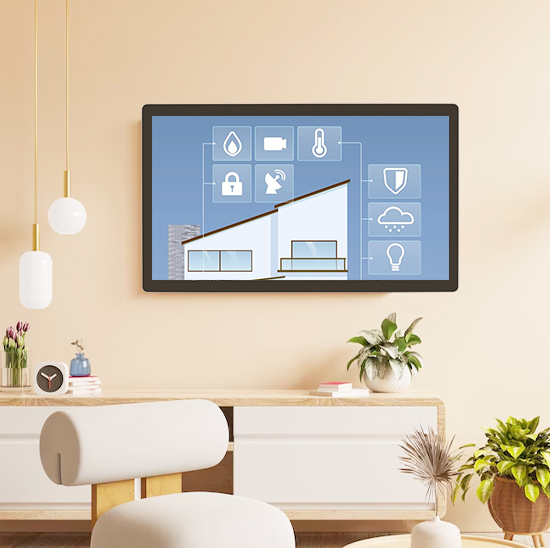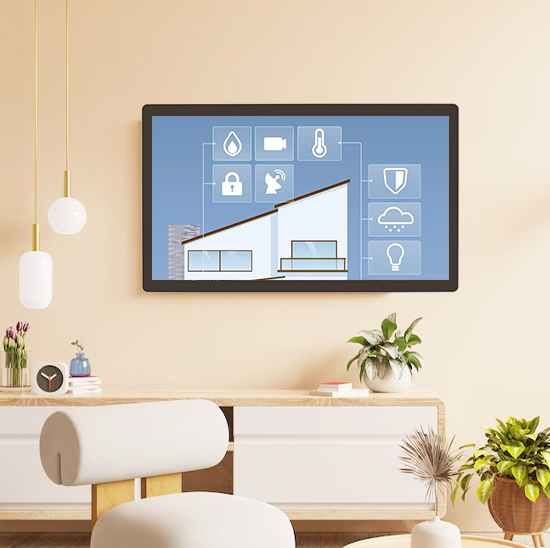In un’era in cui la connettività globale richiede una perfetta conoscenza della lingua, l’apprendimento delle lingue si è evoluto oltre le classi tradizionali. I chioschi per l’apprendimento delle lingue sono emersi come punto di svolta, offerta su richiesta, apprendimento accessibile nelle scuole, aeroporti, biblioteche, e hub aziendali. At the core of these kiosks lies the Language Kiosk Touch screen—a technology that transforms passive learning into an engaging, interactive journey.

Unlike generic touchscreens that lack education-specific design, these specialized screens are engineered to handle diverse language learning tasks, from pronunciation practice to vocabulary drills. They bridge the gap between static learning materials and dynamic user engagement, making language mastery more attainable for learners of all ages and skill levels. Whether you’re an educational institution looking to supplement classroom teaching or a business aiming to train employees, Language Kiosk Touch Screens deliver flexibility, accessibilità, and results. Let’s dive into their key advantages, technical features, applicazioni del mondo reale, e risposte alle domande più comuni.
Key Advantages of Language Kiosk Touch Screen for Learning
1. Boost Interactive Learning Engagement
The biggest strength of Language Chiosco Touch Screens is their ability to turn one-way learning into two-way interaction—critical for retaining language skills. Learners can tap, scorrere, and drag to navigate lessons:
Practice interactive dialogue simulations (per esempio., ordering food in Spanish or asking for directions in Mandarin) with instant feedback on word choice.
Write characters or words directly on the screen with a stylus, receiving real-time corrections for stroke order (ideal for Mandarin, arabo, or Japanese).
Engage in pronunciation drills where the screen analyzes speech and suggests improvements—making speaking practice less intimidating.
Studies show interactive learning increases engagement by 40% compared to reading textbooks alone, as learners stay focused through hands-on participation.
2. Integrate Diverse, Multimodal Learning Resources
Language mastery requires exposure to text, audio, video, and visuals—and these touchscreens centralize all formats in one place:
Access preloaded courses for 10+ lingue, from Spanish and French to niche options like Swahili or Korean.
Watch cultural videos to grasp context (per esempio., a Japanese tea ceremony explanation for language learners) or listen to native speakers for accent practice.
Switch between vocabulary flashcards, grammar quizzes, and listening exercises with a single tap—catering to visual, auditory, and kinesthetic learning styles.
This multimodal approach eliminates the need for multiple learning tools, making study sessions more efficient.
3. Deliver Personalized Learning Paths
Every learner has unique strengths, weaknesses, and pace—Language Kiosk Touch Screen adapt through AI and data tracking:
Take a quick placement test to assess skill level (beginner, intermediate, advanced) and generate a customized plan.
Beginners start with basic greetings and vocabulary; intermediate learners focus on complex grammar or business conversations.
The screen tracks progress, remembering completed lessons and suggesting targeted practice for weak areas (per esempio., past-tense verbs or pronunciation).
Educational tech research shows personalized learning paths help learners progress 30% faster than traditional group classes.
Core Technical Features of High-Quality Language Kiosk Touch Screens
1. High-Sensitivity, Precision Touch Technology
Language learning tasks demand accurate response—whether writing characters or selecting small dialogue options:
Capacitive touch technology supports multi-touch gestures (pinch-to-zoom, scorrere) and responds to light touches, even with dry fingers.
Infrared models (ideal for high-traffic areas) work with gloves and resist scratches, perfect for public kiosks in cold climates.
Sub-10ms response time eliminates lag, preventing frustration during fast-paced lessons.
Stylus compatibility for precise writing practice—essential for languages with complex scripts.
2. Multi-Language Interface & Funzionalità di accessibilità
To serve global learners, these screens prioritize inclusivity:
Switch the main menu to the user’s native language (Inglese, spagnolo, Mandarino, arabo, eccetera.) with one tap—reducing navigation confusion.
High-contrast modes, sintesi vocale, and adjustable font sizes assist visually impaired users.
Advanced models support screen readers for users with severe visual impairments, ensuring no learner is left out.
3. Durevole, High-Visibility Displays for Public Use
Language kiosks thrive in high-traffic areas—so screens must be tough and visible:
10–21 inch displays with 1000+ nit brightness, readable even in direct sunlight (critical for outdoor kiosks or airport terminals).
9H tempered glass resists scratches from keys, styluses, or accidental bumps—ideal for public spaces.
IP54+ water resistance protects against spills (common in café-style kiosk setups) or dust.
Low-power modes for 24/7 use (per esempio., hospitals or transit hubs) reduce energy consumption without sacrificing performance.
4. Seamless Software Integration & Updates
A great touch screen needs reliable software to back it up:
Integrate with leading platforms (Duolingo per le scuole, Rosetta Stone Enterprise) or support custom-branded curriculum (per esempio., company employee training).
Over-the-air (OTA) updates let you add new courses, Correzioni di bug, or security patches remotely—no need to take kiosks offline.
Cloud-based analytics for administrators: track usage (popular languages, peak times) to optimize kiosk placement and resources.
Real-World Applications of Language Kiosk Touch Screen
1. Scuole & Istituzioni educative
K-12 schools and universities leverage these screens to supplement classroom learning:
A Texas middle school installed 5 kiosks in its library—students use them during lunch breaks to practice Spanish/French, boosting exam scores by 15%.
Universities with international students use kiosks for ESL training: new students practice conversational English and academic terminology.
Community colleges use kiosks for adult education programs, helping immigrants learn English to secure jobs.
2. Spazi pubblici: Aeroporti, Biblioteche & Transit Hubs
Public spaces turn idle time into learning opportunities:
Major airports (Atlanta Hartsfield-Jackson, Tokyo Haneda) offer “Traveler’s Language” courses—teaching phrases like “Where is the gate?” in 8 lingue.
European libraries place kiosks in children’s sections, using interactive storybooks to promote bilingualism.
Transit hubs in Berlin and Singapore teach basic local language phrases to tourists, reducing communication barriers.
3. Aziendale & Healthcare Settings
Businesses and healthcare facilities use these screens for practical training:
A multinational retail chain installed kiosks to teach employees Spanish, Mandarino, and Hindi—improving customer satisfaction for non-English speakers by 25%.
Hospitals use kiosks to help staff communicate with patients: nurses pull up medical phrases (per esempio., “Does your chest hurt?") In 12 lingue, reducing miscommunication.
FAQs About Language Kiosk Touch Screens
Q1: How user-friendly are these screens for beginners?
A1: Extremely. They feature simple, icon-based menus and a guided onboarding process. Even young children or older adults can start basic lessons (like vocabulary games) in under 2 minuti. A “Help” button pulls up video tutorials or text guides in the user’s native language.
Q2: Can I add custom courses (per esempio., company-specific training) to the screen?
A2: SÌ. Most commercial-grade models support custom software integration. You can upload your own curriculum (video, quizzes, text lessons) or work with providers to build branded courses. Our team assists with setup to ensure seamless compatibility.
Q3: Do the screens work in bright sunlight or low-light environments?
A3: Assolutamente. High-quality models have 1000+ nit brightness for sunlight readability and adjustable backlighting for dim spaces (like libraries). The anti-glare coating reduces reflections, so the screen is visible from all angles.
Q4: How durable are these screens for high-traffic public areas?
A4: Built for heavy use. 9H tempered glass resists scratches and bumps, while the IP54 rating protects against dust and spills. Most models have a 50,000+ hour lifespan (5+ years of 24/7 use)—ideal for airports, scuole, or transit hubs.
Q5: Can multiple users access the screen at the same time?
A5: It depends on the model. Standard 10–15 inch screens support single-user access for individual learning. Larger 21+ inch models offer multi-touch support for 2–3 users—great for group activities (per esempio., families practicing travel phrases or students working on a language game).
Conclusione
Language Kiosk Touch Screens are revolutionizing language learning—making it interactive, personalized, and accessible wherever people are. Whether in schools, aeroporti, or workplaces, these screens turn idle time into productive learning moments, cater to diverse needs, and simplify maintenance for administrators. Their durable design, multimodal resources, and user-friendly interface make them a smart investment for any institution looking to boost language proficiency.
Ready to bring the power of Language Kiosk Touch Screen to your space? Fill out the form on our website to connect with our language tech experts. Valuteremo le tue esigenze (location, target learners, custom content requirements), recommend the perfect screen model, and provide a free demo to show how it can elevate your language learning offerings. Don’t miss out on making language mastery accessible to everyone—start your journey today!


